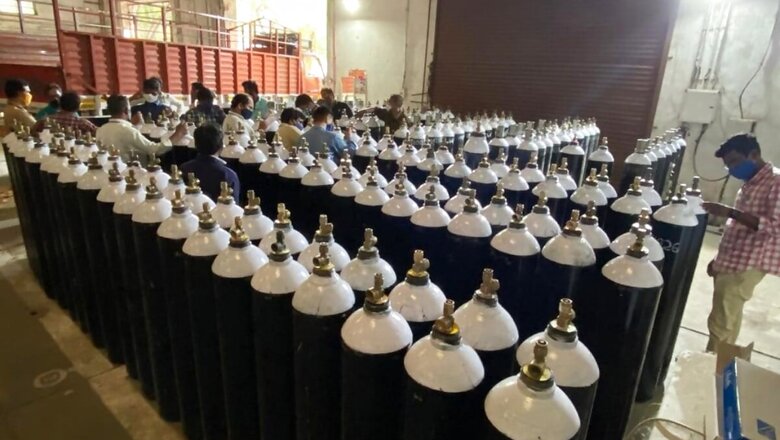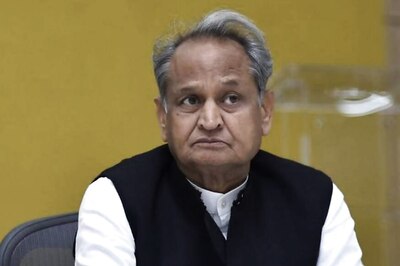
views
Access to oxygen, perhaps the most important commodity in the fight against Covid-19, came under tremendous stress through most of April around the country. As the second wave of the pandemic hit India hard, many patients found it difficult to swiftly access oxygen in several states. Some patients also succumbed to a lack of oxygen around the country.
The Supreme Court and several High Courts then intervened on how oxygen is distributed to various states. The Supreme Court has now constituted a national committee of doctors and bureaucrats to monitor the availability and distribution of oxygen.
While the issue has rightly come under the scanner in view of the devastating second wave, the discussion has largely been limited to blame games, finger-pointing and short-term considerations. As a country, we need to also look at the root causes of such problems. It is important to address these root causes because if India faces a similar situation again, we should not be resorting to Band-Aids to heal deep wounds.
When it comes to oxygen availability, India needs to solve four issues over the next few months before a third wave hits us. One common thread binds these initiatives – greater industrialisation and enabling reforms that promote more industrial capacity and skills.
In the short term, the priority should be plugging the known gaps. This too needs engineering capability and mindset.
Firstly, all hospitals of a certain minimum size should get their own captive oxygen plants. These plants will require appropriate safety standards as well as a trained local workforce. These skills are worth investing in and various skill programmes can be augmented to cover for installation, commissioning and operations of the captive oxygen plants for the hospitals. The priority should be given to states which are currently not industrial in nature and have had to source oxygen via other states. These would include Delhi, Madhya Pradesh, Telangana and Uttar Pradesh, among others.
Secondly, all the unused budget allocations for putting up new pressure swing adsorption (PSA) oxygen plants should be immediately consumed. In January this year, the central government had approved the setting up of 162 PSA units across the country. Unfortunately, when the second wave hit us, only 33 of these were operational on the ground. While states have since scampered to close the gap and most of these 162 units are now expected to be set up by June, it is imperative that such progress be monitored on priority.
On April 25, the central government approved 551 oxygen plants for hospitals at the district level through the PM CARES Fund. The states should give a time-bound plan to realise these facilities. At the minimum, every district should have a few self-sufficient hospitals so that secondary sourcing and dependence on cylinders is left for smaller hospitals.
More importantly, in the long term, we need to reflect on why our collective discourse has such an anathema for addressing root causes. Industrial oxygen is used in a plethora of industries – aerospace, automotive, chemicals, fabrication, glass, metal works, minerals, pharmaceuticals, paper, refining, steel, transportation equipment, waste management, and many others. If the penetration of these industries was ubiquitous, many states could have got local oxygen supplies as the use of industrial facilities to provide medical oxygen was always approved in India in the wake of the pandemic.
However, industries remain clustered in India. Of course, one reason is structural – many oxygen plants are situated currently in mineral-rich areas of eastern India. That is unavoidable. But outside of those areas, the bulk of the supply is coming in from Gujarat and Maharashtra – the main industrial centres. Since both these states were themselves badly hit, even their ability to supply oxygen was limited in the peak days of April. In fact, parts of Maharashtra themselves had to get supplies from other states for a few days.
Dispersion of industrial activity is, hence, critical.
Firstly, the narrative shapers in India – the intelligentsia, media, opinion writers – should back factor market reforms. India needs capital, labour and land reforms urgently so that many more states become attractive destinations for industrial hubs.
Unfortunately, some of the already instituted reforms are languishing. India consolidated forty-four central labour laws in four labour codes over the past year or so. But they have not been implemented yet because the states are yet to frame their corresponding laws. Land reforms of any type are likely to face stiff political resistance. The ongoing farmer protests in the context of agricultural reforms is a case in point.
Secondly, the states need to look urgently at enhancing small industrial capacity until the time large investments happen. One reason why the oxygen crisis exacerbated was that there was very little capacity to quickly produce oxygen cylinders. Several cities faced a shortage of cylinders even when it was possible to refill them. This partially happened because the supply of cylinders itself was limited and then possibly many users did not return the cylinders borrowed from various facilities fearing and anticipating future need.
This was a relatively easier problem to resolve but yet again the engineering and industrialisation mindset being limited, the scarcity persisted. If smaller industrial hubs can’t even make oxygen cylinders quickly, it shows how big a chasm needs to be crossed to manufacture global quality cryogenic containers used in large scale transportation of oxygen.
Not only our own industrial capacity was limited, for a few days, the narrative got captured by needless distractions. One of them was about foreign aid. While India remains grateful for every small or large act of kindness from friendly countries around the world, a lot of time has been gratuitously spent on how this aid was going to solve our caseload surge.
That a greater focus on industrialisation works is proved even by our own experience. When the first wave struck us, India was expected to run short of even sanitiser, face masks and personal protection equipment (PPE) kits. But the industry rose to the occasion with support from the government and, in a few months, India had become the second-biggest global producer of PPE kits. This quick response was possible because we had local capacity spread across the country. We surmounted not just the availability problem but also the distribution problem.
So when it comes to oxygen availability, the right question for us to ask will be – can we increase three times the current 7,500 MT liquid oxygen manufacturing capacity in the next couple of years? If the answer to that has to be yes, all stakeholders need to back land, labour and capital reforms being undertaken by the government.
Read all the Latest News, Breaking News and Coronavirus News here. Follow us on Facebook, Twitter and Telegram.




















Comments
0 comment